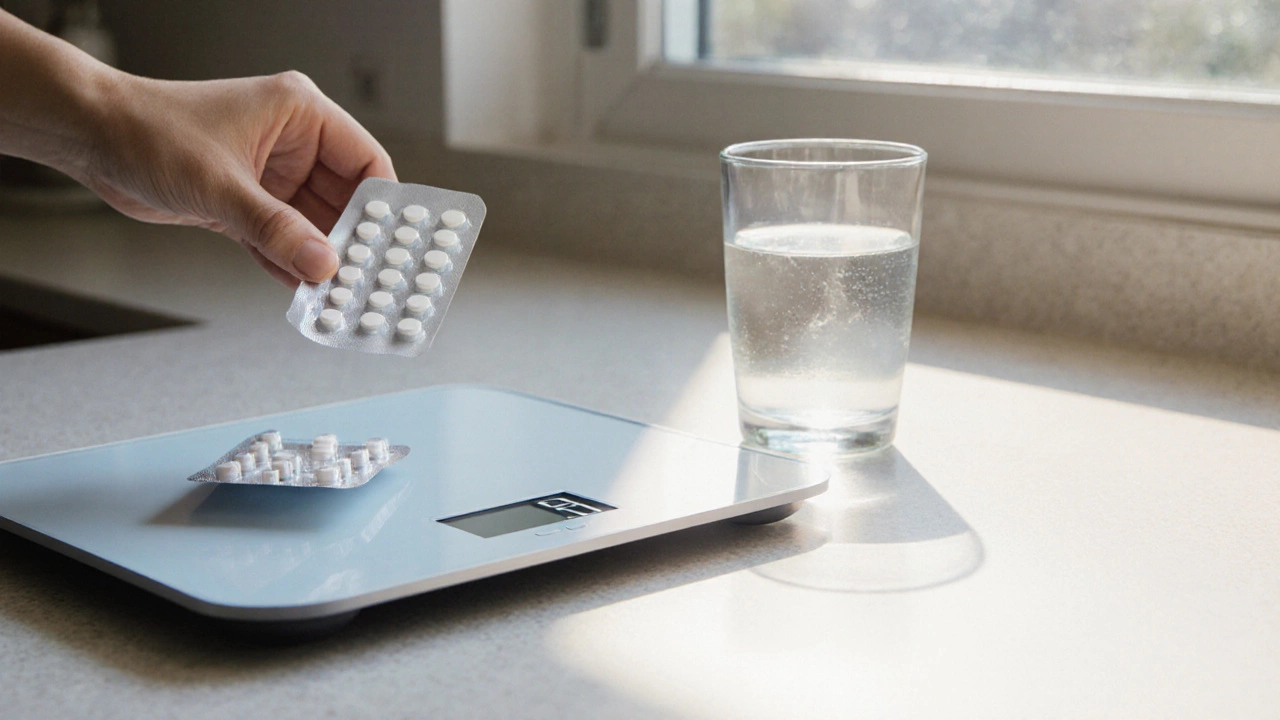Diabetes Medication Guide 2025 – What You Need to Know
Living with diabetes means keeping an eye on blood sugar, diet, and the pills you take. With new drugs hitting the market and older ones facing shortages, it’s easy to feel overwhelmed. This guide breaks down the most talked‑about medicines, the real side effects, and safer alternatives, so you can make confident choices.
Top Diabetes Drugs Right Now
In 2025 the strongest diabetes medicines include GLP‑1 agonists like Ozempic and newer combo pills such as tirzepatide. They work by boosting insulin release and slowing glucose absorption, which often leads to better control than older options. Doctors also still rely on Metformin for many patients because it’s cheap and works well for early‑stage type 2 diabetes. However, Metformin isn’t a one‑size‑fits‑all—people with kidney problems or certain gastrointestinal issues may struggle with it.
If you’re wondering whether a drug is the right fit, ask your doctor about your A1C level. Most guidelines suggest starting Metformin when A1C hits 7 % or higher, but newer drugs can be added earlier if lifestyle changes aren’t enough. The key is to match the medication to your health profile, not just follow a trend.
Safer Alternatives and When to Switch
Metformin alternatives have become popular because they cause fewer stomach problems and have added weight‑loss benefits. SGLT2 inhibitors (like dapagliflozin) help kidneys dump excess sugar, while newer GLP‑1 drugs (such as semaglutide) often lead to modest weight loss and lower heart‑failure risk. If you’ve heard about a “new pill for type 2 diabetes 2024,” it’s likely a once‑weekly GLP‑1 that reduces injection hassle.
Switching isn’t just about side effects. Some patients experience lactic acidosis with Metformin, especially if kidney function drops. Others notice swelling or urinary infections with SGLT2 inhibitors. Talk to your doctor about a blood‑test check before changing meds, and keep an eye on any new symptoms.
Celebrity buzz around drugs like Ozempic can be confusing. While Ozempic does help with weight loss, it’s still a prescription medication designed for blood‑sugar control. Using it without medical supervision can lead to nausea, low blood sugar, or pancreatitis. Treat these stories as cautionary tales—not a shortcut.
When choosing the safest diabetic medicine, balance effectiveness with how it fits your daily routine. A once‑daily pill is easier to remember than a twice‑daily regimen, but a weekly injection might be worth it if it drops your A1C by a bigger margin.
Bottom line: stay informed, ask questions, and track how you feel. Your body will tell you if a medication is working or if it’s time for a change. Keep a simple log of blood‑sugar readings, any side effects, and how your energy levels shift. Sharing that log with your doctor makes the next appointment more productive.
Remember, no medication can replace a balanced diet and regular movement. Pair your chosen drug with sensible carbs, fiber‑rich veggies, and a walk after meals, and you’ll give yourself the best shot at stable sugar levels and a healthier life.

What medication is replacing metformin for type 2 diabetes?
Metformin is no longer the only first-choice diabetes drug. Newer medications like GLP-1 agonists and SGLT2 inhibitors offer better heart and kidney protection, weight loss, and fewer side effects for many patients.

Metformin Weight Loss Timeline: How Fast Can You See Results?
Discover how fast you can lose weight on metformin, the factors that speed or slow progress, and practical tips to get results safely.

Can You Eat Bananas While Taking Metformin? Safe Fruit Choices for Diabetics Explained
Worried about eating bananas while on metformin? Learn what the science says about this fruit, whether it affects your blood sugar, and get practical tips for diabetics.

Strongest Diabetes Medicines: What Really Works in 2025?
Explore the most powerful medicines for diabetes, including who they help, how they work, and which are considered strongest by recent research and doctors.

Top Alternatives to Metformin: What Doctors Are Prescribing for Diabetes in 2025
Metformin isn’t the only pill in town for diabetes. Discover what medications doctors in India are now prescribing instead of metformin to manage type 2 diabetes.

New Pill for Type 2 Diabetes 2024: What You Need to Know
Heard about the new pill for type 2 diabetes that hit the market in 2024? This article explains what the drug is, how it works, and how it’s different from previous treatments. You’ll get real info on side effects, practical tips for daily life, and honest talk about who might benefit most. Find out if this new option could fit into your diabetes management plan.

Did Kelly Clarkson Take Ozempic for Weight Loss? The Real Story Behind Diabetes Drugs and Celebrity Diets
Curious if Kelly Clarkson joined the Hollywood crowd using Ozempic to slim down? This article digs into what’s really happening, separating facts from rumors. You’ll also get the science on diabetes drugs like Ozempic, how they work for weight loss, and what doctors want you to know. Plus, find out the side effects and whether these medications are right for regular people, not just celebrities. Get real tips if you're thinking about managing your weight with or without these meds.

Why Is Metformin So Bad to Take? The Real Story on the Most Common Diabetes Pill
Metformin has a reputation for being both helpful and hard to tolerate. This article breaks down why so many people complain about metformin, from the annoying side effects to long-term risks. You'll get straightforward answers, real-life tips, and a clearer idea of what you can expect if your doctor suggests it. We’ll also talk about who really shouldn’t take it and when to push for an alternative. Just the facts, not the fluff.

New Diabetes Drug Replacing Metformin: What You Need to Know
A major shift is happening in diabetes medication as new drugs step up to replace metformin. This article breaks down which drugs are leading the charge, how they work, and why some doctors now prefer them. You'll learn which patients could benefit most and what side effects to look out for. Get practical tips if you're considering a change in your diabetes treatment. Stay informed about what's coming next in diabetes care.

Does Metformin Cause Weight Loss? The Real Story Behind This Diabetes Med
Metformin is a medication often used for type 2 diabetes, but lots of people wonder if it really helps with weight loss. This article breaks down what metformin actually does, how it affects your body weight, and who might see results. Find out why doctors prescribe it, what you should watch out for, and tips for managing your health while taking it. We’ll also cover common myths and practical advice you can actually use.

Diabetic Pill: What Is the Number One Choice for Diabetes?
Looking for the best diabetic pill can be confusing, especially with so many options available. This article breaks down the number one prescription pill for type 2 diabetes and explains how it works. Find out why doctors often recommend it, what you should expect, and a few things to watch for. Get clear, practical tips you can use today. No fluff—just straight talk about diabetes medication.

Who Cannot Take Metformin? What You Really Need to Know
Not everyone can safely take metformin, one of the most common drugs for type 2 diabetes. Some health conditions make it risky, and knowing who should avoid it can save you a lot of trouble. If you or someone you care about is starting diabetes treatment, this guide breaks down who really should steer clear of metformin. Knowing the details helps you have smarter talks with your doctor. Catch the warning signs before problems start.

Legit Online Pharmacies: How to Spot the Real Deal
Mar, 17 2025



